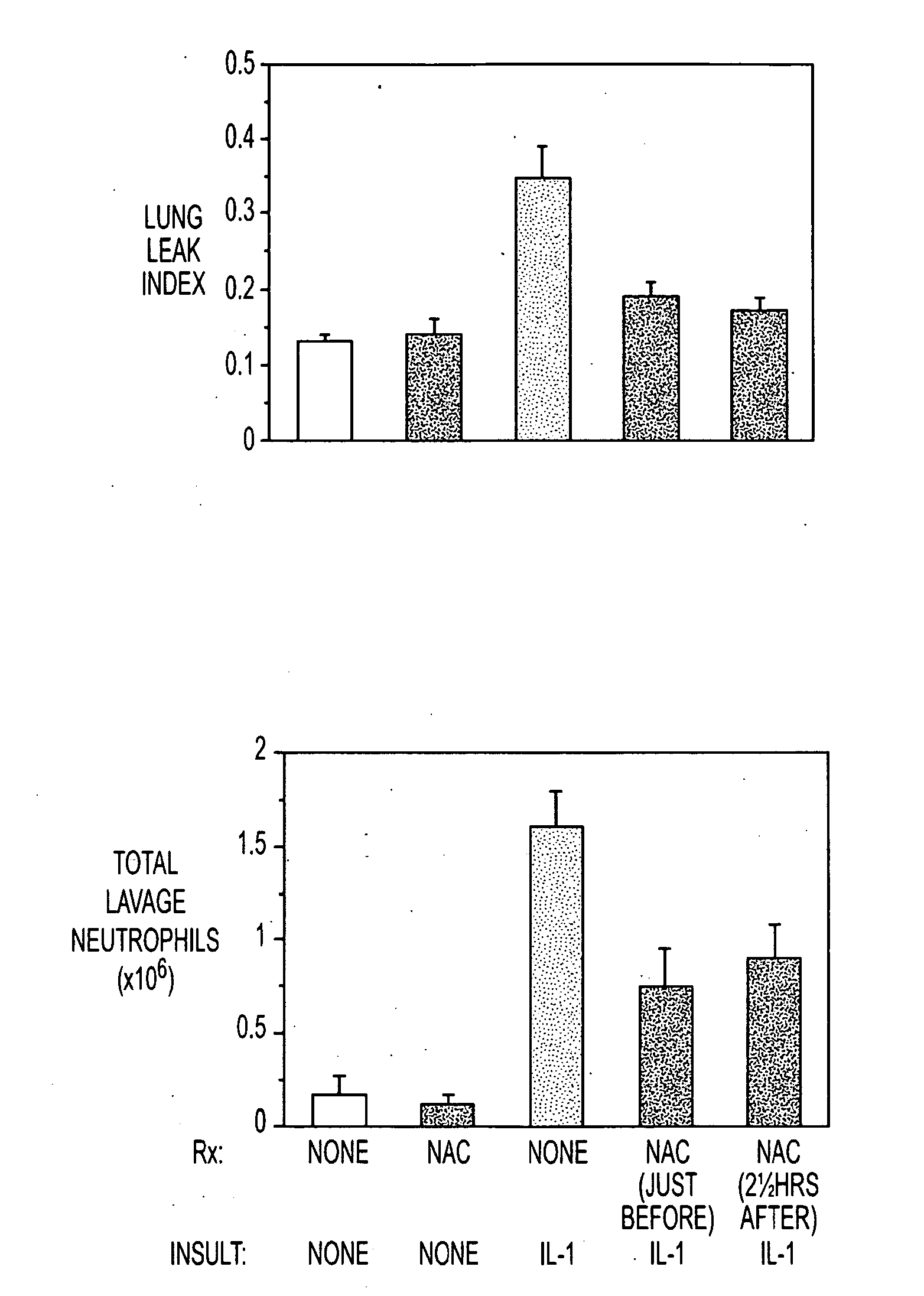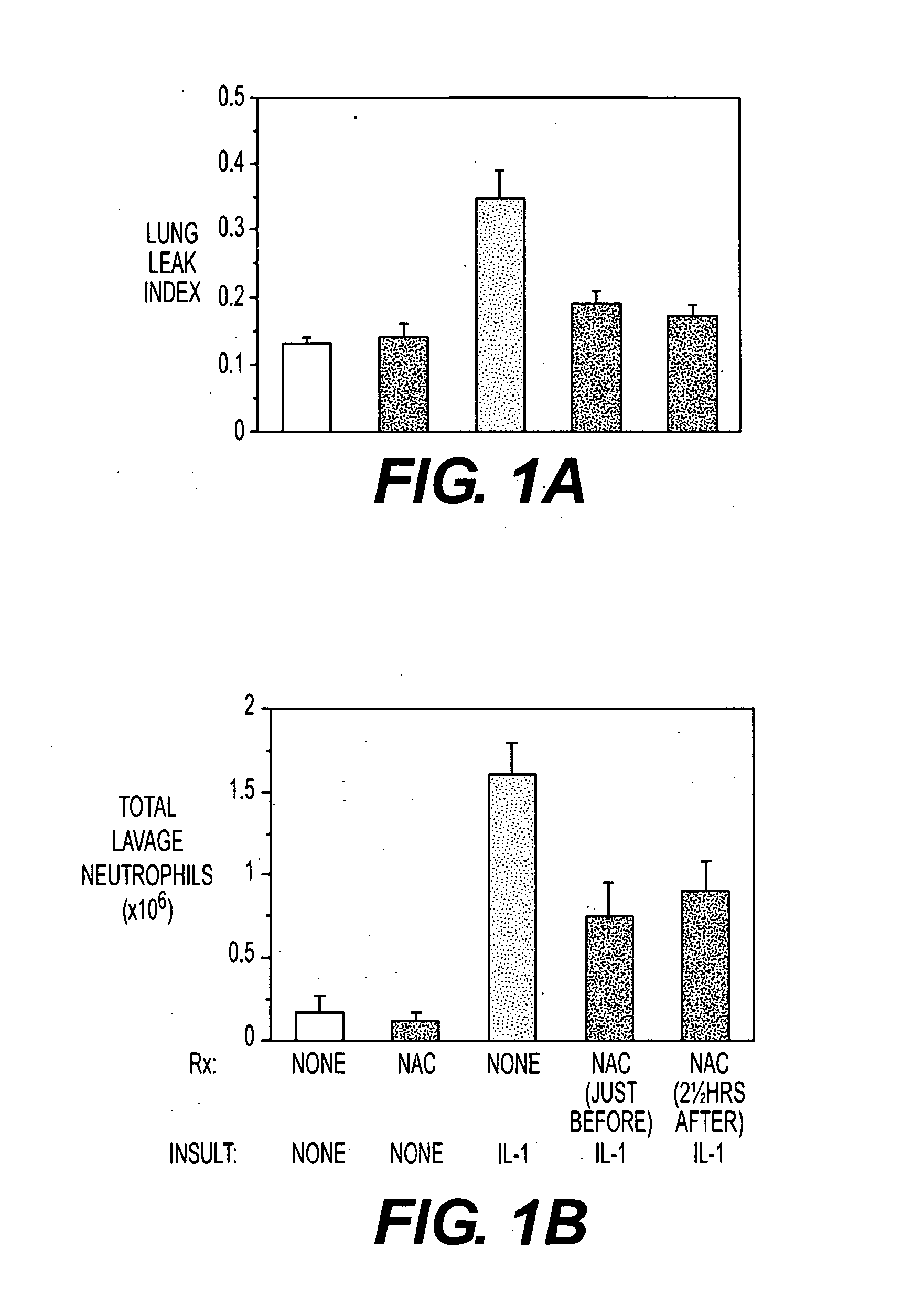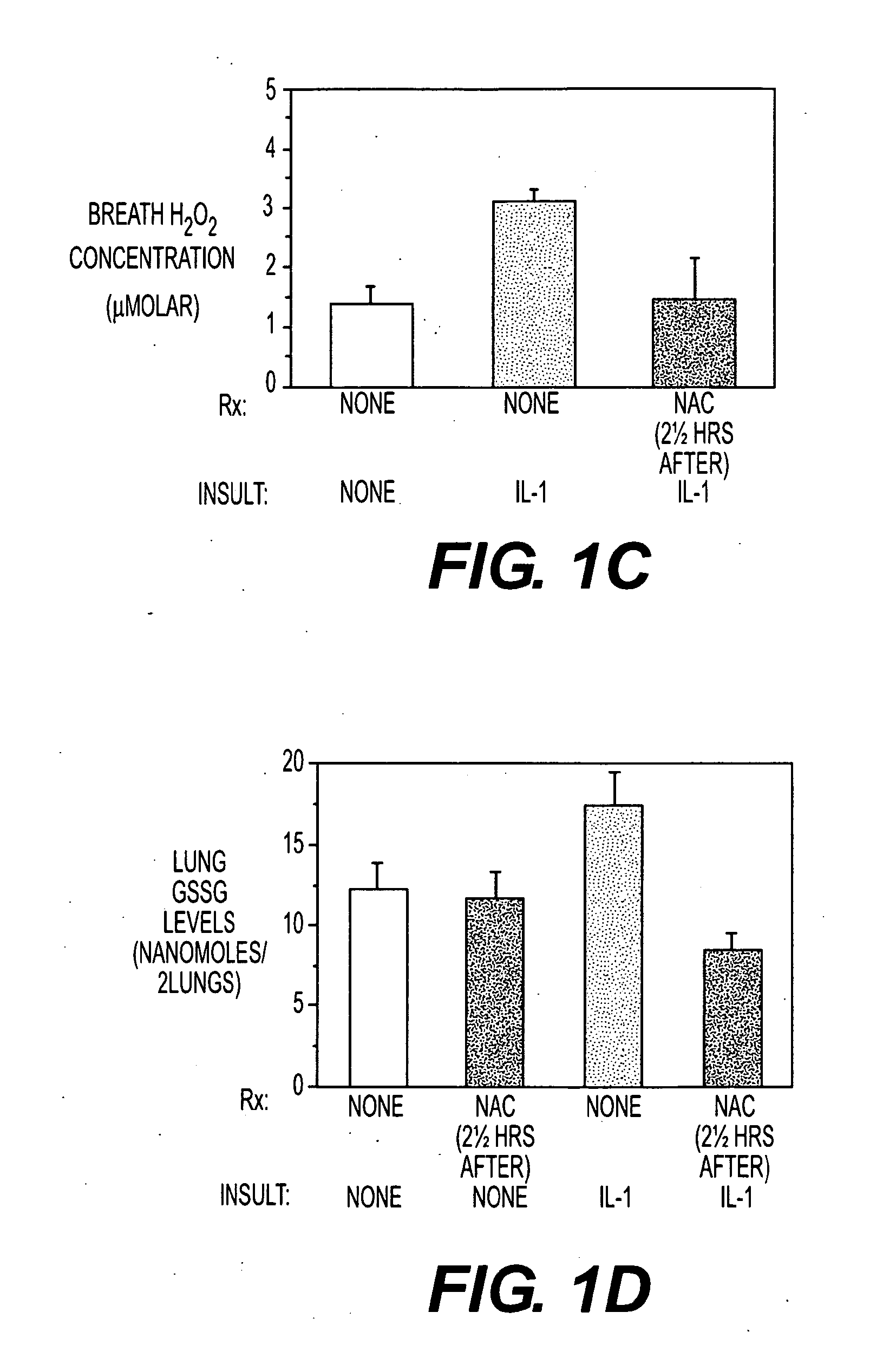Compositions and methods for treating lung disorders
a technology for lung disorders and compositions, applied in the field of compositions and methods for treating lung disorders, can solve the problems of mof and death, species with appreciable toxicities, and easily damage endothelial, epithelial and other cells in vitro, so as to reduce the severity and consequences of ongoing reduce the risk of subjects, and mitigate the effects of alveolar capillary membrane injury
- Summary
- Abstract
- Description
- Claims
- Application Information
AI Technical Summary
Benefits of technology
Problems solved by technology
Method used
Image
Examples
example 1
NAC Treatment Decreases Lung Injury in Cytokine Insufflated Rats (4).
[0051]Insufflating IL-1 produced an inflammatory acute lung injury (ARDS, FIG. 1A) in rats 5 hours later, which was associated with increases in lung lavage neutrophils (FIG. 1B), expired H2O2 levels (FIG. 1C) and lung GSSG levels (FIG. 1D). In contrast, rats administered NAC (150 mg / kg intravenously) either just before or 2½ hours after IL-1 insufflation had decreased lung leak index, lung lavage neutrophil numbers, expired H2O2 levels and lung GSSG levels compared to untreated rats insufflated with IL-1. The results confirm that NAC alone may be useful as a preventative or treatment for ACMI in subject.
example 2
ERGO Pre-treatment Decreases Lung Injury and Inflammation in Lungs of Cytokine Insufflated Rats.
[0052]Insufflating IL-1 and interferon-γ (IFN-γ) produced an inflammatory acute lung injury (ARDS) in rats 24 hours later (9). Cytokine insufflated rats had increased lung lavage LDH concentrations (FIG. 2A) and neutrophil numbers (FIG. 2B) compared to saline insufflated control rats. In contrast, rats administered (Rx) a single intravenous injection of 150 mg / kg ERGO (1 hour before) IL-1 and IFN-γ insufflation showed reduced levels of markers of alveolar capillary membrane injury by exhibiting decreased lung lavage LDH, total leukocyte and neutrophil concentrations. Lavage LDH levels paralleled other measures of lung injury including increased epithelial-derived cytokeratin 18 and endothelial-derived angiotensin converting enzyme (ACE) levels and morphologic evidence of inflammation and injury.
example 3
ERGO Treatment (150 mg / kg Given 1 Hour Before Cytokine Insufflation) After Insult Decreases Injury and Inflammation in Lungs of Cytokine Insufflated Rats.
[0053]Rats administered a single intravenous bolus of 150 mg / kg ERGO (18 hours after) cytokine insufflation exhibited a reduction in the severity of markers of alveolar capillary membrane injury (FIG. 3A) lung inflammation (data not shown) and lung neutrophil numbers (FIG. 3B) compared to saline insufflated untreated rats insufflated with cytokines. Remarkably, protection occurred with ERGO administered post-insult even after some neutrophils had invaded the lung.
PUM
| Property | Measurement | Unit |
|---|---|---|
| Time | aaaaa | aaaaa |
Abstract
Description
Claims
Application Information
 Login to View More
Login to View More - R&D
- Intellectual Property
- Life Sciences
- Materials
- Tech Scout
- Unparalleled Data Quality
- Higher Quality Content
- 60% Fewer Hallucinations
Browse by: Latest US Patents, China's latest patents, Technical Efficacy Thesaurus, Application Domain, Technology Topic, Popular Technical Reports.
© 2025 PatSnap. All rights reserved.Legal|Privacy policy|Modern Slavery Act Transparency Statement|Sitemap|About US| Contact US: help@patsnap.com



